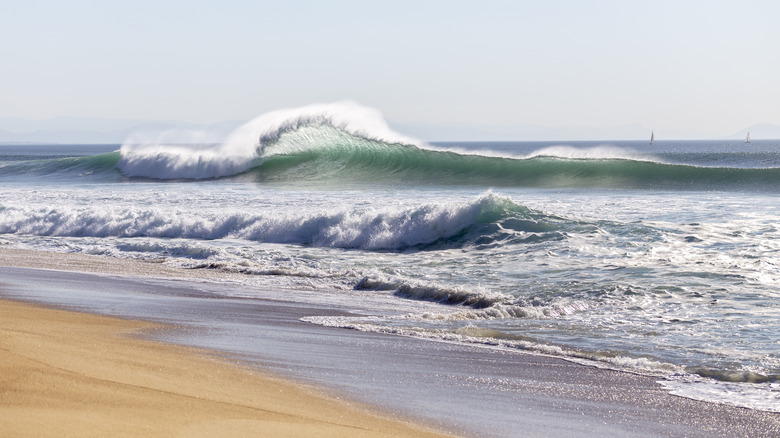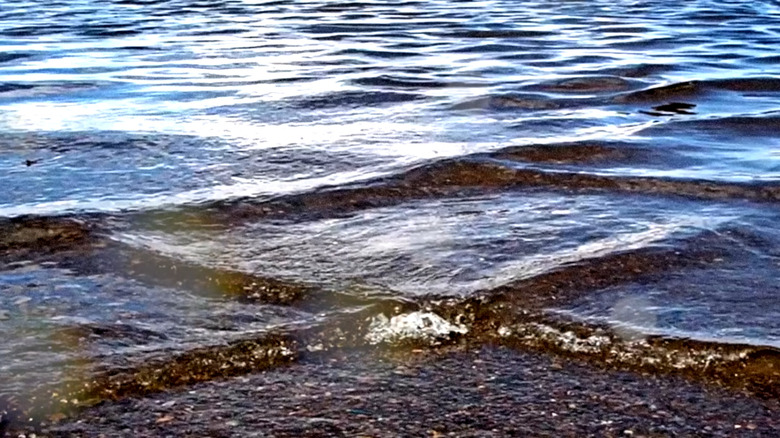The Most Dangerous Types Of Waves You Should Be Able To Recognize
Most of us love a good splash in the waves at the beach. Whether we're swimming, bodyboarding, surfing, or simply watching the waves break over our feet, it's the definition of summer (or winter, depending where you are) fun. However, time in the water isn't always safe. You may have heard of famously dangerous wave spots in the world, like Portugal's North Beach, the site of surfing competitions, or the horrifying sneaker waves of Iceland's Reynisfjara Black Sand Beach.
Even outside these spots, there are some types of waves that you really have to watch for. No matter what shoreline activity you're doing, you should know all about shorebreak waves. Also called "inside break" or "insiders," these waves occur when there is a sharp or dramatic slope right off the shore, causing the water to break on land. They can lead to major injuries, particularly in the head and neck, as well as the spine.
The insidious nature of these waves means that it doesn't really matter whether you're seeing large waves that would normally keep you out of the water or smaller ones that look inviting on a hot day. They're dangerous, no matter what. Shorebreak waves are caused by the steepness of the ocean floor. Usually, a gradual slope of the shore into the ocean gives waves time to slowly break. When there is a sharper and quicker transition from the shallow water to the deeper ocean, these waves come up fast and break with power. In a video from the National Oceanic and Atmospheric Association (NOAA), it's explained that it can be like the weight of a car crashing on top of you.
How to avoid dangerous waves
Shorebreak waves can throw you around, and you may not spot them right away. Before you enter the water at a beach, it's important to know the conditions. Whether or not you've been to a particular beach before, it's best to only swim where there are lifeguards on duty. Before you go for a dip, ask them if there are shorebreak waves or any other conditions that should keep you out of the water. If there are warnings or flags posted to indicate that the area isn't safe for swimming, don't assume you know better. The same goes for high surf warnings. Waves during these conditions can approach you faster than you may expect and hit above the usual tide line. If you find yourself in these scenarios and you're in the water, get out right away, and protect your head and neck by keeping your hands in front of you.
Another type of dangerous and deadly wave is the square wave pattern. When the water makes a grid shape, it's referred to as cross-sea waves, and if you see them, get back on shore immediately. These occur when different weather systems hit at different angles. Square waves can sink a ship quickly and can drown swimmers. It doesn't matter that it looks calm on the surface. Imagine a duck gliding smoothly on the water, whose feet are furiously paddling under the surface. Sometimes you can't see what's happening underneath. Check the weather conditions, speak to the lifeguard on duty, and stay safe out there.

